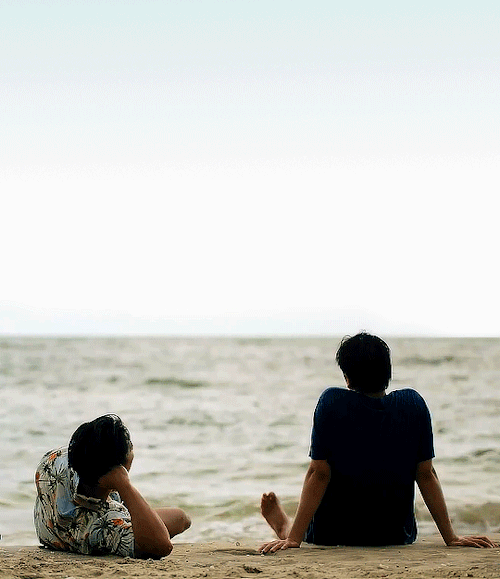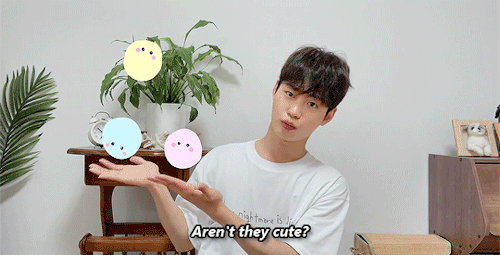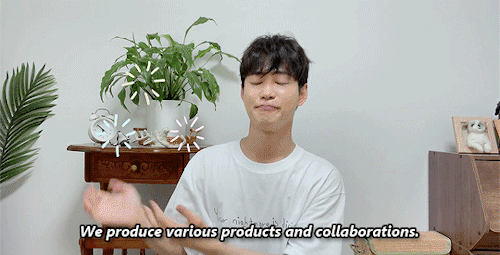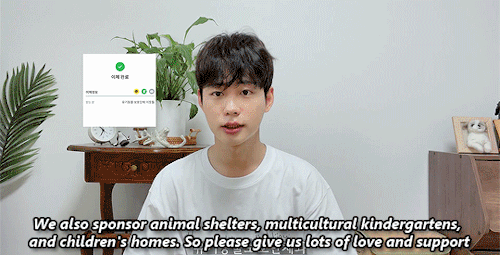Spare Me Your Mercy, Love In The Big City, And The Trap Of Pursuing Mainstream Popularity For Queer Art
Spare Me Your Mercy, Love in the Big City, and the Trap of Pursuing Mainstream Popularity for Queer Art

I read this excellent post by @waitmyturtles yesterday tackling the frustrating failures of Spare Me Your Mercy, a show that was one of my most anticipated of the year, but that ended up so lost in its own confusing blend of sauces that I didn't even finish it. I appreciated her clarity that despite the show receiving strong ratings and finding popularity with the mainstream domestic audience, that doesn't actually make it a success as a piece of narrative storytelling. And if anything, its popularity underlines why it was a failure as a queer narrative, in particular.

Because here's the thing about great queer art—it's almost never popular with mainstream audiences, especially in socially conservative countries. High quality, well-executed, honest and authentic queer art is more likely to be protested than celebrated in places where real queer people are not safe to live free lives. For an illustration of this, look no further than another highly anticipated queer drama of this year in Love in the Big City. Easily the queerest show to ever get made and aired on Korean television, it drew major protests before it even started, forcing the production to release it quickly in one go to ensure it would reach audiences. And why were those conservative groups so afraid of this little old drama? Because even just in its trailer and promotional materials, it was clear this was no sanitized, G-rated drama created to make gay people seem more palatable to the masses (unlike the film version with the same name, which not coincidentally has been much more warmly received by the Korean media establishment). This show was real, and raw, and QUEER in a way that terrified those bigots, because they know one of the most important ways the oppressed can advocate for themselves is by demonstrating their humanity through art.

Which brings me back to turtles’ post, and the importance of separating the concerns of art and commerce when discussing the different ways media can succeed. This is something I had some good dialogue about with @biochemjess @pharawee @clairedaring @flowerbeasblog and turtles (and even more of you in the tags) when I was still watching and posting about Spare Me Your Mercy. I originally posted to unpack why the show was flopping narratively, which turned into a discussion of the fact that it was getting good ratings from the domestic audience despite this. And while I appreciated understanding how the show is landing with its priority audience, for me, it’s very important to keep a distinction between these two different kinds of success. Especially in discussions of queer art, and especially for a show whose creators explicitly said they were intentionally downplaying the queer romance part of the queer romance ( @benkaben) to avoid “distracting” from their other messaging goals.

The important thing to keep in mind is that for queer stories, when they are popular with a mainstream audience it’s often because they are stripping any authenticity from the representation of queer people. Turtles addressed this well in her review of 2gether when she posited that part of the reason it was such a phenomenon in conservative Asian countries (aside from the timing of its release in the early days of the global pandemic), was because its presentation of queerness was mostly unrecognizable to real queer people, stripped of any true notion of queer sexuality or the realities of homophobia. Compare the reception of The Miracle of Teddy Bear—a show that absolutely refused to make its central queer character palatable for a mainstream audience, because the fact that he wasn’t palatable was the point—to that of Spare Me Your Mercy, a show whose creators chose to censor their own story. The ugly truth is that when we’re talking about queer dramas, the best and most vital shows are pretty much anathema to mainstream ratings success.

The impulse to pursue mainstream popularity and commercial success for queer art inevitably leads to watering down queer stories ( @twig-tea) to make them more light, comfortable and familiar to a majority heterosexual and socially conservative audience. And yes, of course, some degree of commercial success is necessary for queer art to get made in the first place. This is how the Thai BL market took off, by recognizing that there was an audience beyond queer people who were open to watching stories about boys falling in love, as long as it didn’t get too real. But there is a careful line to walk here, and it’s so important not to confuse popularity with artistic merit. Queer people won’t win liberation by self-censoring queer media to make it more palatable for mainstream audiences. We win when we make queer art so good and so honest that the mainstream is forced to acknowledge it. We win by challenging the mainstream perspective on queer people and how they should behave, not by catering to it. As @bengiyo said in a completely different discourse, the question is not whether the audience can love queer characters whose actual queerness is suppressed for their comfort. That kind of respectability politics is old hat and it never fucking gets us anywhere. The real question he posed is this: “Do you love us when we’re ugly, when we’re sick, when we’re old, when we’re being mean or catty?”

Which is why a show like Love in the Big City ultimately won by being so excellent, and so true, and so undeniable, that it broke through with audiences around the world and achieved some measure of recognition in spite of how very unpalatable it was to its domestic audience. Unlike Spare Me Your Mercy, this show did not get amazing domestic ratings, but its message was heard far beyond those who watched it on Korean television. And that is the point. Making authentic art that advances the struggle of queer people and making nominally queer art that can achieve mainstream popularity are completely different pursuits, and we must keep that in mind when we discuss whether and how these shows succeeded or failed. And while both must exist in a healthy media ecosystem, one will always be more vital for the survival of queer people than the other.
More Posts from Enemies-to-friends-to-lovers and Others








seize the chance | "requested" by anonymous
me, an aroace: idk maybe i could see myself in a relationship they don’t look horrible
me, as soon as someone approaches me with romantic intent:

Pat knowing that Pran isn’t ready to tell anyone about them yet and RESPECTING THAT and Pran going home and cheering Pat up (balcony scene) and making him laugh and feel better. - And then them communicating when they’ve a disagreement and ALSO APOLOGIZING TO EACH OTHER and trying to solve it (Like we never see in dramas).
They have such a healthy relationship and they work so well together.
Pran and Pat best boyfriends, i said what i said.








All my life, I was always told not to be friends with this one guy- but we all know that forbidden fruit is always sweeter. From two people who can’t be friends, without knowing it, we became two people who couldn’t just be friends. I wrote this song for him.
Can you believe that Gaya Sa Pelikula talked about so many lgbt+ related issues as openly as it did?
Can you believe that it gave a lesson about euphemisms and how it is not shameful saying the word gay out loud? Can you believe it talked about allyship and how it’s not always done right, but that if people are willing to listen to lgbt+ people and are open to learn it is valuable? When was the last time you saw a show saying microaggression? And especially, related to how people assume that passing privilege is a good thing and shame more feminine lgbt+ people. When was the last time you heard that “you don’t look gay” is NOT a compliment as explicitly as gsp did? Can you believe it also talked about how Vlad devalued those little mundane romantic things like prom because as lgbt+ we feel those are still out of reach for us because of the hateful societies we live in? But then immidiately showed us that we can have those experiences as lgbt+ people. Can you believe how they also highlighted that coming out feels like coming home, or all the talk about Boca del Cielo which is a place that doesn’t feel real but in the end it is found, and how the show values finally being able to express yourself as lgbt+ as something to celebrate and dance to? Something freeing and beautiful?







“let’s go into the water”
-
 nhannsworld liked this · 2 weeks ago
nhannsworld liked this · 2 weeks ago -
 mellowdragons-stuff liked this · 3 weeks ago
mellowdragons-stuff liked this · 3 weeks ago -
 halchive liked this · 3 weeks ago
halchive liked this · 3 weeks ago -
 thorneofacre liked this · 4 weeks ago
thorneofacre liked this · 4 weeks ago -
 spoonzlol liked this · 1 month ago
spoonzlol liked this · 1 month ago -
 bisexual-banana liked this · 1 month ago
bisexual-banana liked this · 1 month ago -
 sapphicyanli liked this · 1 month ago
sapphicyanli liked this · 1 month ago -
 eriingo reblogged this · 1 month ago
eriingo reblogged this · 1 month ago -
 eriingo liked this · 1 month ago
eriingo liked this · 1 month ago -
 lunayukiblackthorn liked this · 1 month ago
lunayukiblackthorn liked this · 1 month ago -
 umbrelights liked this · 1 month ago
umbrelights liked this · 1 month ago -
 the-zbird liked this · 1 month ago
the-zbird liked this · 1 month ago -
 nelkey liked this · 1 month ago
nelkey liked this · 1 month ago -
 aoimeakane reblogged this · 1 month ago
aoimeakane reblogged this · 1 month ago -
 aoimeakane liked this · 1 month ago
aoimeakane liked this · 1 month ago -
 pawzonme liked this · 2 months ago
pawzonme liked this · 2 months ago -
 pinkneckathletefreak liked this · 2 months ago
pinkneckathletefreak liked this · 2 months ago -
 jesusisstuff liked this · 2 months ago
jesusisstuff liked this · 2 months ago -
 kpoph0esworld liked this · 2 months ago
kpoph0esworld liked this · 2 months ago -
 clemelntine liked this · 2 months ago
clemelntine liked this · 2 months ago -
 loanfo reblogged this · 3 months ago
loanfo reblogged this · 3 months ago -
 loanfo liked this · 3 months ago
loanfo liked this · 3 months ago -
 wondeoraendeu liked this · 3 months ago
wondeoraendeu liked this · 3 months ago -
 jothenot liked this · 3 months ago
jothenot liked this · 3 months ago -
 bigcitydr3ams liked this · 3 months ago
bigcitydr3ams liked this · 3 months ago -
 skamalltheway liked this · 3 months ago
skamalltheway liked this · 3 months ago -
 slaenrs liked this · 3 months ago
slaenrs liked this · 3 months ago -
 callmewhateveruwanticantthink liked this · 3 months ago
callmewhateveruwanticantthink liked this · 3 months ago -
 sana10 liked this · 3 months ago
sana10 liked this · 3 months ago -
 vatermal liked this · 3 months ago
vatermal liked this · 3 months ago -
 chuckaroo2394 liked this · 3 months ago
chuckaroo2394 liked this · 3 months ago -
 clairedaring reblogged this · 3 months ago
clairedaring reblogged this · 3 months ago -
 sooeunz liked this · 3 months ago
sooeunz liked this · 3 months ago -
 ilovethemayhemmorethanthelove liked this · 3 months ago
ilovethemayhemmorethanthelove liked this · 3 months ago -
 wafflepeguin liked this · 3 months ago
wafflepeguin liked this · 3 months ago -
 anisotropebl liked this · 3 months ago
anisotropebl liked this · 3 months ago -
 shedreamtoflions liked this · 4 months ago
shedreamtoflions liked this · 4 months ago -
 fleurdumad liked this · 4 months ago
fleurdumad liked this · 4 months ago -
 clarefraser123 liked this · 4 months ago
clarefraser123 liked this · 4 months ago -
 randomlycoral liked this · 4 months ago
randomlycoral liked this · 4 months ago -
 lake-hysterial liked this · 4 months ago
lake-hysterial liked this · 4 months ago -
 lettertomilena liked this · 4 months ago
lettertomilena liked this · 4 months ago -
 11-dom liked this · 4 months ago
11-dom liked this · 4 months ago -
 bellesnuits reblogged this · 4 months ago
bellesnuits reblogged this · 4 months ago

□ a bl sideblog, because yes, it reached that level◇▪︎ ♡🏳️🌈☆
450 posts
























